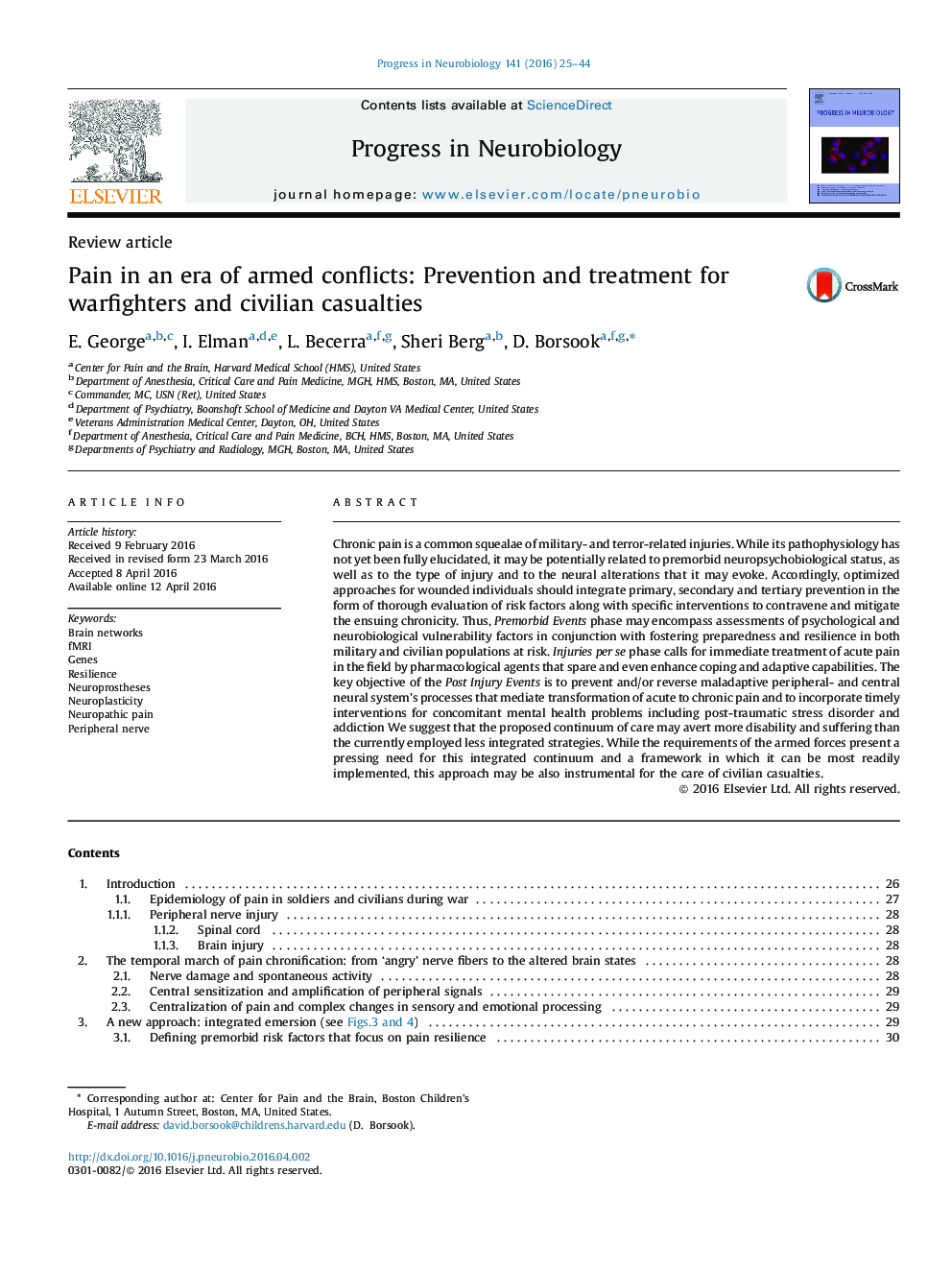| Article ID | Journal | Published Year | Pages | File Type |
|---|---|---|---|---|
| 4353234 | Progress in Neurobiology | 2016 | 20 Pages |
Abstract
Chronic pain is a common squealae of military- and terror-related injuries. While its pathophysiology has not yet been fully elucidated, it may be potentially related to premorbid neuropsychobiological status, as well as to the type of injury and to the neural alterations that it may evoke. Accordingly, optimized approaches for wounded individuals should integrate primary, secondary and tertiary prevention in the form of thorough evaluation of risk factors along with specific interventions to contravene and mitigate the ensuing chronicity. Thus, Premorbid Events phase may encompass assessments of psychological and neurobiological vulnerability factors in conjunction with fostering preparedness and resilience in both military and civilian populations at risk. Injuries per se phase calls for immediate treatment of acute pain in the field by pharmacological agents that spare and even enhance coping and adaptive capabilities. The key objective of the Post Injury Events is to prevent and/or reverse maladaptive peripheral- and central neural system's processes that mediate transformation of acute to chronic pain and to incorporate timely interventions for concomitant mental health problems including post-traumatic stress disorder and addiction We suggest that the proposed continuum of care may avert more disability and suffering than the currently employed less integrated strategies. While the requirements of the armed forces present a pressing need for this integrated continuum and a framework in which it can be most readily implemented, this approach may be also instrumental for the care of civilian casualties.
Keywords
Related Topics
Life Sciences
Neuroscience
Neuroscience (General)
Authors
E. George, I. Elman, L. Becerra, Sheri Berg, D. Borsook,
